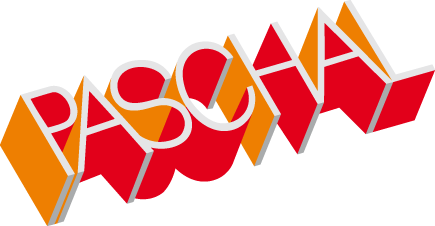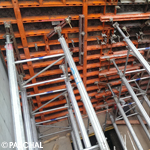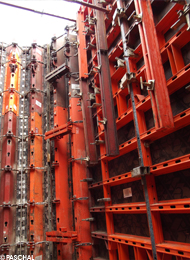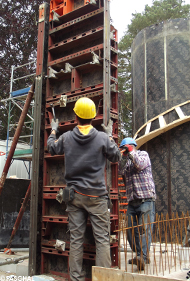A major feat: GASS shoring system for Berlin residential complex
One residential project with four PASCHAL systems in use at the same time: LOGO.3, TTR, GASS and PASCHAL Deck.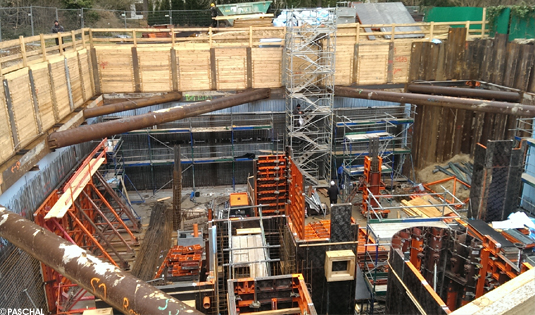
PASCHAL formwork systems in place and ready to form the enclosing walls of the basement levels as single-sided walls.
Just under a thousand square metres of formwork materials – LOGO.3, Modular and TTR – were used on the site along with PASCHAL Deck and the GASS Aluminium Shoring System.
The massive shell construction of the upmarket residential complex in Berlin consists almost entirely of concrete and encompasses two basement levels, a ground floor and two upper storeys.
To secure the building excavation for the basement levels, the roughly 12 metre deep pit was secured and constructed on all four sides by a Berlin type pit lining.
On completion of the earth and civil engineering works, the construction company set about the shell construction works, making use of PASCHAL for the great variety of formwork tasks.
The purchaser for the engineering office responsible for the shell construction has been aware of the advantages of PASCHAL systems since 2009 and also won over the responsible project manager.
As construction progressed apace, the project manager also came more and more to appreciate the advantages of these formwork and shoring systems, especially as for this special project all of the formwork and shoring tasks could be handled within the system, with no need for expensive and time-consuming special solutions with supporting timbers.
So, for example, rounded stopends were formed consistently through the combination of semi-rounded column formwork with LOGO formwork panels at the sides, plus two connecting elements.
Another example is provided by the fair-faced concrete columns with their unilateral offset.
Service from a practical base
PASCHAL supported both the contractors carrying out the work and the sub-contractors with the full planning, logistics for the hired equipment and the instruction of the formwork crew on site.
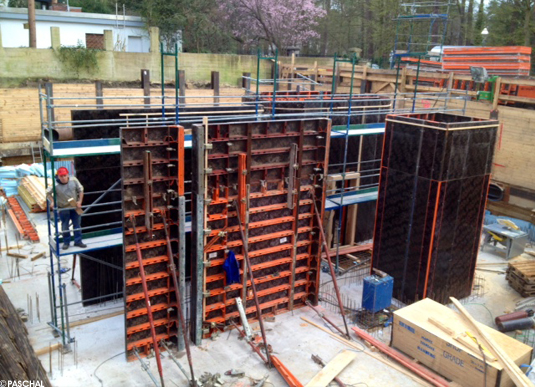
Every formwork task was handled by the system.
Concrete, right from the start
The basis of the project, the 28 x 25 metre foundation pit was first secured all round by a Berlin type pit lining. Once the entire foundation pit had been dug out, the foundation for the building was laid in the form of a 65 cm to 125 cm thick reinforced concrete base plate. The reinforced walls of the basement levels were formed as single-sided walls with the LOGO.3 formwork system and concreted with water-impermeable concrete. For this, the formwork team combined two formwork units in LOGO.3 formwork of dimensions 6.50 m wide x 4.30 m high = (3.40 + 0.90 m) and created the external concrete walls each in 12 concrete sections. This made it possible to create a uniform pattern of crossed hori-zontal and vertical joints.
Main staircase
The open staircase – with angular corners on the outside and oval on the inside – with its concrete parapet was formed using a combination of the TTR formwork system for the internal core and LOGO.3 for the exterior.
However, this process of forming in two different directions was not the only challenge, as the walls of the staircase do not run right through all of the storeys.
To take up the vertical loads, an support unit was constructed, formed and concreted in the second basement level.
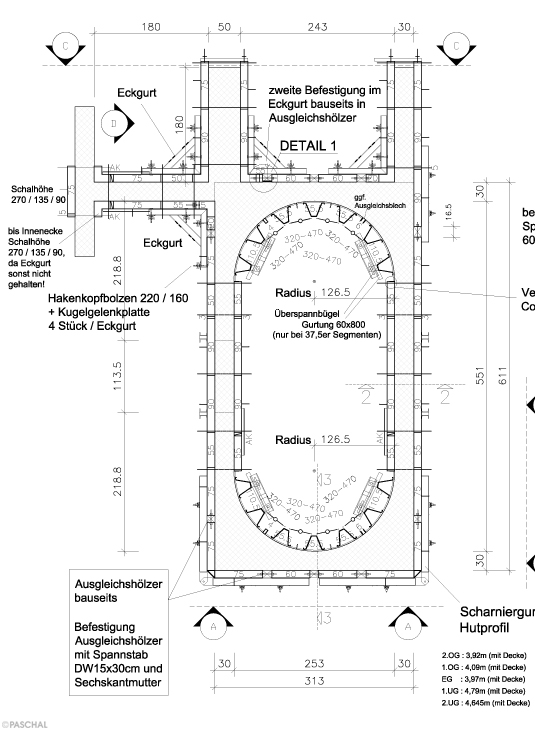
Formwork planning for the construction of the staircase in the first basement level.
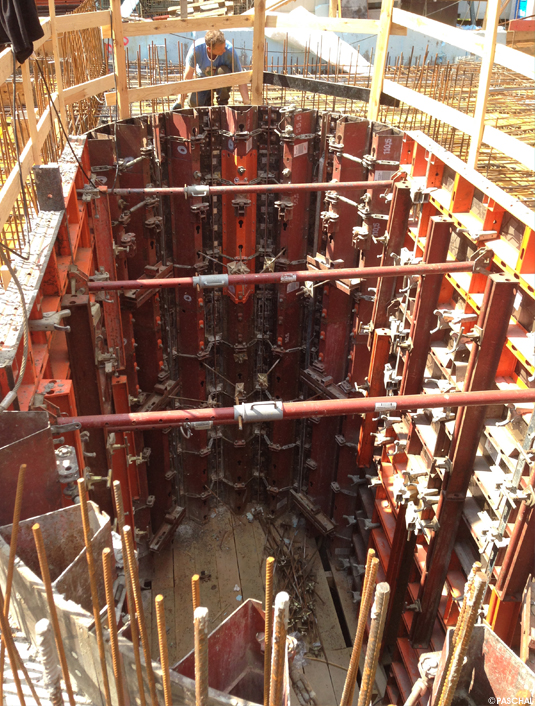
The photo shows the forming of the curve with TTR formwork in direct combination with LOGO.3 formwork.
Car-lift shaft in two height operations
On completion of the slab over the first basement level, the first task was to create the internal walls of the lift shaft in reinforced concrete with a formwork height of 4.75 m, to allow these walls – as stipulated by the planner of the weight-bearing structure – to be used as an abutment supporting the single-sided formwork of the two external walls.
To take up the horizontal forces, legs from the GASS system were put horizontally.
The walls of the car lift shaft were created in operations undertaken at two heights.
1st height operation:
To create the external walls in the second basement level to a formwork height of 5.65 m, LOGO.3 was secured as single-sided formwork with 6.00 m high supporting jacks.
2nd height operation:
To make it possible to bring the shaft walls up to the level of the wall above the first basement level, there was an intermediate level created in the car lift shaft with system parts from the GASS Aluminium Shoring System.
The wall formwork was assembled and laid on this working platform and then lifted into vertical position by a crane.
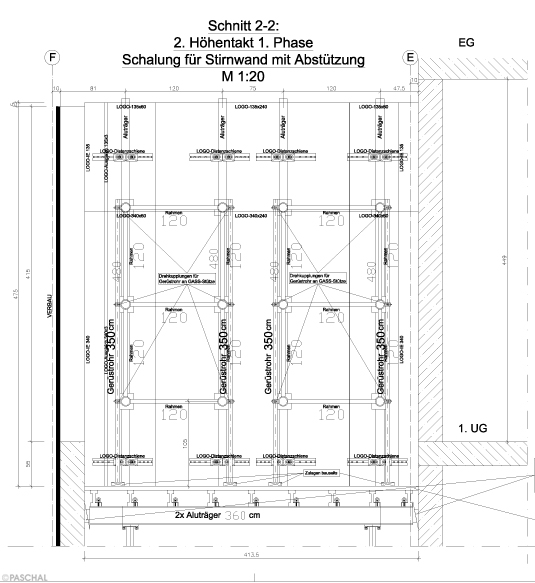
Extract from the formwork plan for the external walls of the car lift shaft to be created as single-sided walls.
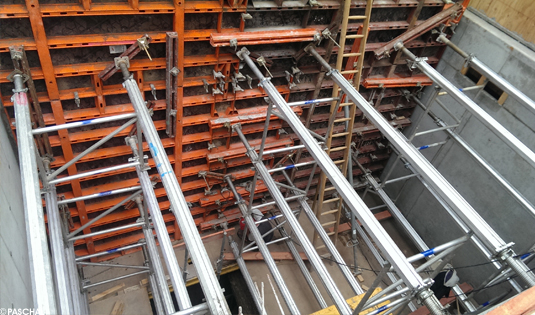
To transfer the horizontal forces, in accordance with the stipulations of the planner of the weight-bearing construction, legss from the GASS Aluminium Shoring System were used horizontally, providing safe and reliable support for the LOGO.3 formwork during the concreting work.
Indoor pool
As the bottom of the pool projects into the lower basement level, it was concreted in with water-impermeable concrete after the external wall and the beam running through between these two boundaries had been completed. The bottom of the pool covers an area of 95 square metres and was created using H20 beams from the PASCHAL Deck system along with plywood panels from the contractors stock.
Once the required degree of concrete strength had been achieved, the bottom of the pool was used as the supporting surface for the supporting jacks for the single-sided wall formwork. As forces of 160 kN were in play on each leg of the supporting jacks, to take up the loads on the bottom of the pool under the floor of the pool, use was made of heavy-duty legs from the GASS Aluminium Shoring System, to transfer the loads over to the concrete base plate.
Practical advice on formwork
Thanks to the comprehensive formwork planning and practical instruction provided on site by PASCHAL, by the time they reached the ground floor, the formwork team was so familiar with PASCHAL systems that they were able to carry out the remaining formwork tasks on their own.
